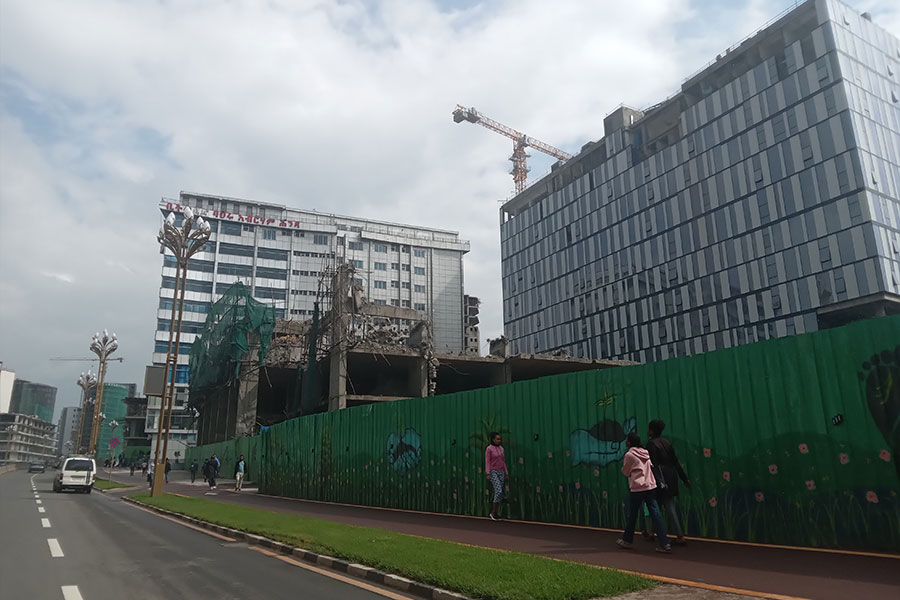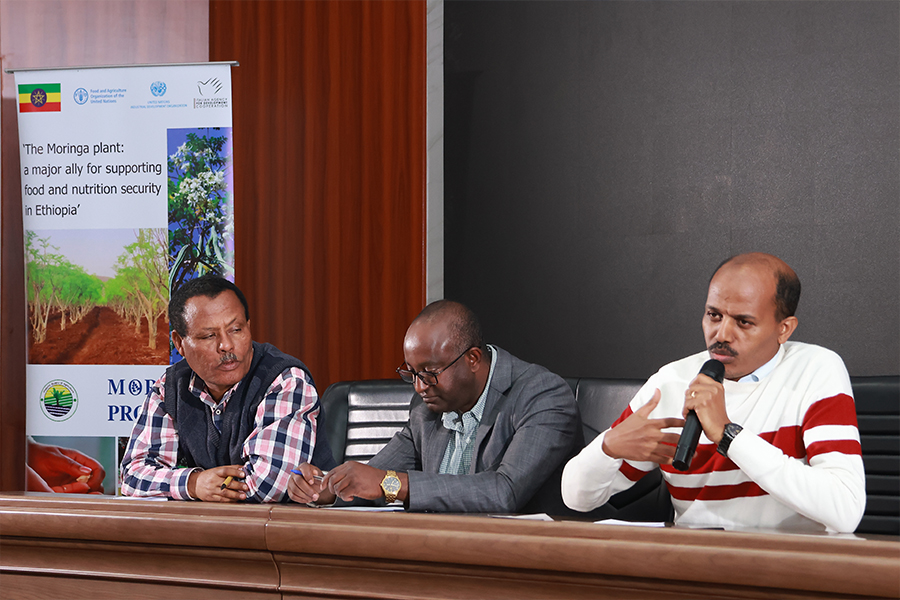
Radar | Jul 20,2019
Aug 3 , 2019
By SELAMAWIT MENGESAHA ( FORTUNE STAFF WRITER )
 The technology, Building Information Modeling (BIM), is a 3D-based software that offers architects, engineers and other construction professionals the tools to efficiently plan, design, construct and manage buildings and infrastructure.
The technology, Building Information Modeling (BIM), is a 3D-based software that offers architects, engineers and other construction professionals the tools to efficiently plan, design, construct and manage buildings and infrastructure. The Construction Project Management Institute has drafted a road map to introduce a new technology that will digitise the construction management of buildings and infrastructure. The technology, Building Information Modeling (BIM), is a 3D-based software that offers architects, engineers and other construction professionals the tools to efficiently plan, design, construct and manage buildings and infrastructure.
To introduce the use of the software, the Institute developed a road map over the last eight months. The road map is in the final stages of preparation and review by the Construction Industry Technical Committee, a team formed by Prime Minister Abiy Ahmed (PhD), before it is sent to the Council of Ministers for approval.
The draft is expected to be tabled to the Council of Ministers next year, according to Feleke Assefa, acting director of technology transfer at the Institute, which is tasked with initiating policy and action plans to facilitate competitive construction project management by identifying gaps in the construction industry.
The technology, Building Information Modeling (BIM), is a 3D-based software that offers architects, engineers and other construction professionals the tools to efficiently plan, design, construct and manage buildings and infrastructure.
"The software allows clients to follow-up on the progress of their buildings from their homes," said Feleke. "The commonly used construction design software AutoCAD is difficult to use by a non–professional."
The road map also suggests the mandatory implementation of the technology for all buildings that are over 15-storey high by 2025.
Yohannes Abbay Consulting Architects & Engineers, a local firm that supervised the construction of Meles Zenawi Leadership Academy, Adigrat University Administration Building and ASTU Research Park, among others, has supplied the software. The company imported the programme from South Africa for 14 million Br. It has also trained 20 professionals from the Institute on how to use the software.
The 20 trainees will provide training to other professionals in the construction sector and, and there are plans to incorporate the technology into the curriculum of universities of science and technology. It will also invite all private building construction companies to use the new software.
Architects and engineers, as well as those who have graduated from Technical Vocational & Educational Teaching (TVET) schools, will be trained by the Institute. The Institute also plans to generate income by providing consultancy services in the field of construction project management.
The Institute piloted the software on the designs of 13-storey buildings under the middle-income housing scheme and the construction of a seven-story building at ICT Park in Goro.
The pilot project demonstrated that the software evaluated the quality, quantity and strength of construction materials by analysing standard weight and size and presented a 3D visualisation. It presents the user of any potential discrepancies in the design and quality of construction materials by flagging them with warning signals. The software also forecasts building durability, environmental impact and maintenance needs.
The technology helps professionals follow up on the work performed at each stage of the building process. This allows early corrections of flaws in the design and construction of buildings. Contractors can quickly determine the location of electric cables and water pipes using the technology.
Jemal Mohammed, an engineer with three decades of experience and owner and general manager at Blue Matrix Consultancy, recommends the Institute force hydro dams and road construction projects to use the technology.
"Such projects have problems with being completed on time," said Jemal. "As well as the use of inappropriate construction inputs and processes and poor design problems."
PUBLISHED ON
Aug 03,2019 [ VOL
20 , NO
1005]

Radar | Jul 20,2019

In-Picture | Sep 29,2024

Radar | Mar 13,2021

Fortune News | Oct 16,2021

Fortune News | Oct 01,2022

Fortune News | Jan 25,2020

Fortune News | Oct 31,2020

Radar | Nov 11,2023

Fortune News | Apr 30,2022

Radar | Jun 19,2021

Dec 22 , 2024 . By TIZITA SHEWAFERAW
Charged with transforming colossal state-owned enterprises into modern and competitiv...

Aug 18 , 2024 . By AKSAH ITALO
Although predictable Yonas Zerihun's job in the ride-hailing service is not immune to...

Jul 28 , 2024 . By TIZITA SHEWAFERAW
Unhabitual, perhaps too many, Samuel Gebreyohannes, 38, used to occasionally enjoy a couple of beers at breakfast. However, he recently swit...

Jul 13 , 2024 . By AKSAH ITALO
Investors who rely on tractors, trucks, and field vehicles for commuting, transporting commodities, and f...

Oct 18 , 2025
The political establishment, notably the ruling party and its top brass, has become p...

Oct 11 , 2025
Ladislas Farago, a roving Associated Press (AP) correspondent, arrived in Ethiopia in...

Oct 4 , 2025
Eyob Tekalegn (PhD) had been in the Governor's chair for only weeks when, on Septembe...

Sep 27 , 2025
Four years into an experiment with “shock therapy” in education, the national moo...